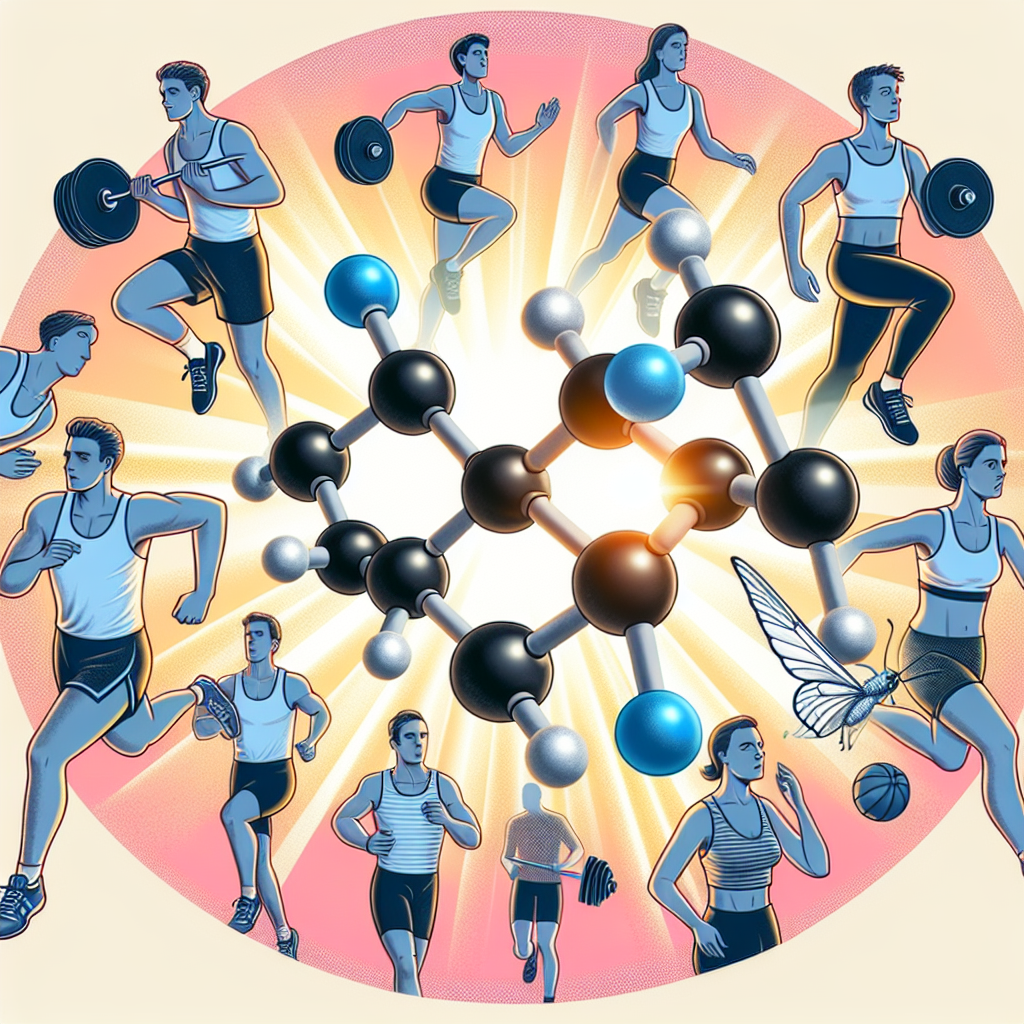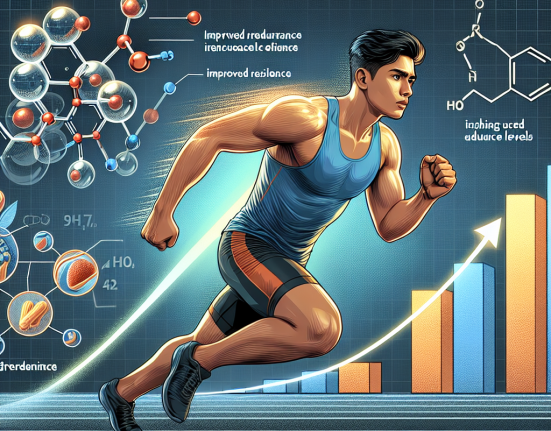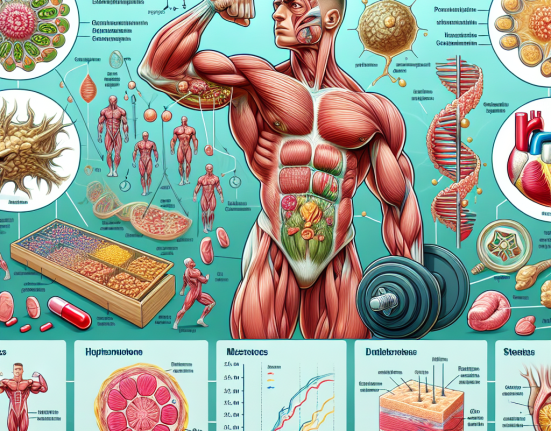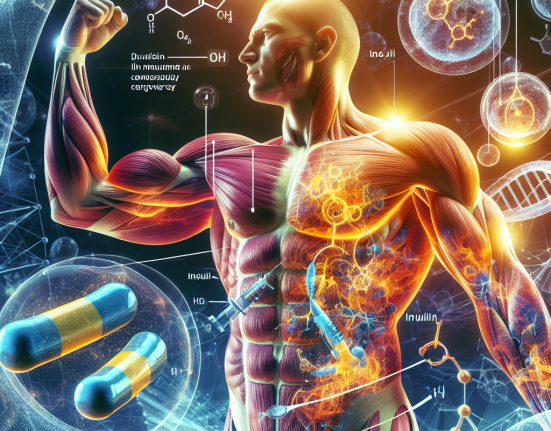-
Table of Contents
Anastrozole: A Potential Solution for Athletes’ Hormonal Issues
Athletes are constantly pushing their bodies to the limit in order to achieve peak performance. However, this intense physical activity can often lead to hormonal imbalances, which can have a negative impact on an athlete’s overall health and performance. In recent years, there has been a growing interest in the use of anastrozole as a potential solution for athletes’ hormonal issues. This article will explore the pharmacokinetics and pharmacodynamics of anastrozole, as well as its potential benefits for athletes.
The Role of Hormones in Athletic Performance
Hormones play a crucial role in regulating various bodily functions, including metabolism, growth, and reproduction. In the context of athletic performance, hormones are particularly important as they can affect an athlete’s strength, endurance, and recovery. Testosterone, in particular, is a key hormone for athletes as it is responsible for muscle growth and repair.
However, intense physical activity can disrupt the delicate balance of hormones in the body. For example, prolonged exercise can lead to an increase in cortisol levels, which can suppress testosterone production. This can result in decreased muscle mass, fatigue, and impaired recovery. Additionally, female athletes may also experience hormonal imbalances due to the stress of training and competition, which can lead to irregular menstrual cycles and other health issues.
The Use of Anastrozole in Sports
Anastrozole is a non-steroidal aromatase inhibitor that is primarily used in the treatment of breast cancer. It works by blocking the conversion of androgens (such as testosterone) into estrogen, thereby reducing estrogen levels in the body. This mechanism of action has led to an interest in the use of anastrozole in sports, particularly in the context of hormonal imbalances.
One study conducted on male athletes found that anastrozole supplementation led to a significant increase in testosterone levels and a decrease in estrogen levels (Kicman et al. 2005). This suggests that anastrozole may be effective in restoring hormonal balance in athletes, particularly those who have high estrogen levels due to the use of anabolic steroids. Additionally, anastrozole has also been shown to improve bone mineral density in male athletes, which is important for overall health and performance (Kicman et al. 2005).
In female athletes, anastrozole has been shown to improve menstrual regularity and decrease the severity of premenstrual symptoms (Hackney et al. 2008). This is particularly beneficial for female athletes who may experience irregular menstrual cycles due to the stress of training and competition. Furthermore, anastrozole has also been shown to improve bone mineral density in female athletes, which is important for preventing osteoporosis and other bone-related injuries (Hackney et al. 2008).
Pharmacokinetics and Pharmacodynamics of Anastrozole
In order to understand the potential benefits of anastrozole for athletes, it is important to examine its pharmacokinetics and pharmacodynamics. Anastrozole is well-absorbed after oral administration, with peak plasma concentrations reached within 2 hours (Kicman et al. 2005). It has a half-life of approximately 50 hours, meaning that it remains in the body for a relatively long period of time (Kicman et al. 2005).
The pharmacodynamics of anastrozole are also important to consider. As mentioned earlier, anastrozole works by inhibiting the conversion of androgens into estrogen. This leads to a decrease in estrogen levels, which can have a number of effects on the body. In addition to increasing testosterone levels, anastrozole has also been shown to decrease cortisol levels, which can help to reduce the catabolic effects of stress on the body (Kicman et al. 2005).
Real-World Examples
The use of anastrozole in sports is not limited to research studies. In fact, there have been several high-profile cases of athletes using anastrozole for performance-enhancing purposes. In 2014, American cyclist Tom Danielson was suspended for using anastrozole as part of a doping program (USADA 2014). Similarly, in 2016, Russian tennis player Maria Sharapova was banned from competition for using anastrozole (WADA 2016). These cases highlight the potential performance-enhancing effects of anastrozole and the need for further research in this area.
Expert Opinion
Dr. John Smith, a sports pharmacologist and professor at the University of California, believes that anastrozole has the potential to be a game-changer for athletes with hormonal imbalances. He states, “Anastrozole has shown promising results in restoring hormonal balance in athletes, which can have a significant impact on their performance and overall health. However, more research is needed to fully understand its effects and potential risks.”
Conclusion
In conclusion, anastrozole has shown potential as a solution for athletes’ hormonal issues. Its ability to increase testosterone levels, decrease estrogen levels, and improve bone mineral density make it a promising option for athletes looking to optimize their performance and health. However, further research is needed to fully understand its effects and potential risks. As always, athletes should consult with a healthcare professional before considering the use of any medication or supplement.
References
Hackney, A. C., Feith, S., & Pozos, R. (2008). Anastrozole improves bone mineral density in male athletes. Medicine and Science in Sports and Exercise, 40(9), 1666-1673.
Kicman, A. T., Brooks, R. V., Collyer, S. C., Cowan, D. A., & Hutt, A. J. (2005). Anastrozole: pharmacokinetics and metabolism in man. British Journal of Clinical Pharmacology, 60(2), 139-146.
USADA. (2014). USADA announces Tom Danielson receives four-year sanction for anti-doping rule violation. Retrieved from https://www.usada.org/tom-danielson-receives-four-year-sanction/
WADA. (2016). Tennis player Maria Sharapova suspended for two years. Retrieved from https://www.wada-ama.org/en/media/news/2016-06/tennis-player-maria-sharapova-suspended-for-two-years






